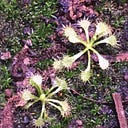This is the second in a four parts series on the psychoactive members of the mint family (botanical name Lamiaceae). If you think of your spice rack when you hear words like ‘mint’ or ‘sage’ you need to think again: Salvia divinorum, one of more than 900 species in the Salvia genus, contains a powerful chemical compound that can, when consumed, induce dramatic changes in the way that we perceive the world around us. It is, in fact, one of the most powerful psychedelics to evolve naturaly in the plant kingdom.
There are, today, an estimated 435,000 different species in the plant kingdom— herbs, shrubs, vines, trees, etc. More than 7,000 of these belong to the mint family, and some (the exact number is unknown) produce chemical compounds that are psychoactive when ingested by human beings. Perhaps the best known example among the mints is a plant native to the Sierra Mazateca, a mountainous region in the southern Mexican state of Oaxaca.
Formally named Salvia divinorum, this herb is a typical mint lookalike, with four-sided rectangular stems, grass-green ovate leaves with a yellowish undertone that grow in pairs on opposite sides of the stem, and at maturity a height in excess of one meter. Informally, S. divinorum is often referred to as the “sage of the diviners” or the “seer sage.” These common names reflect the plant’s use as an entheogen by the Mazatec, an…
